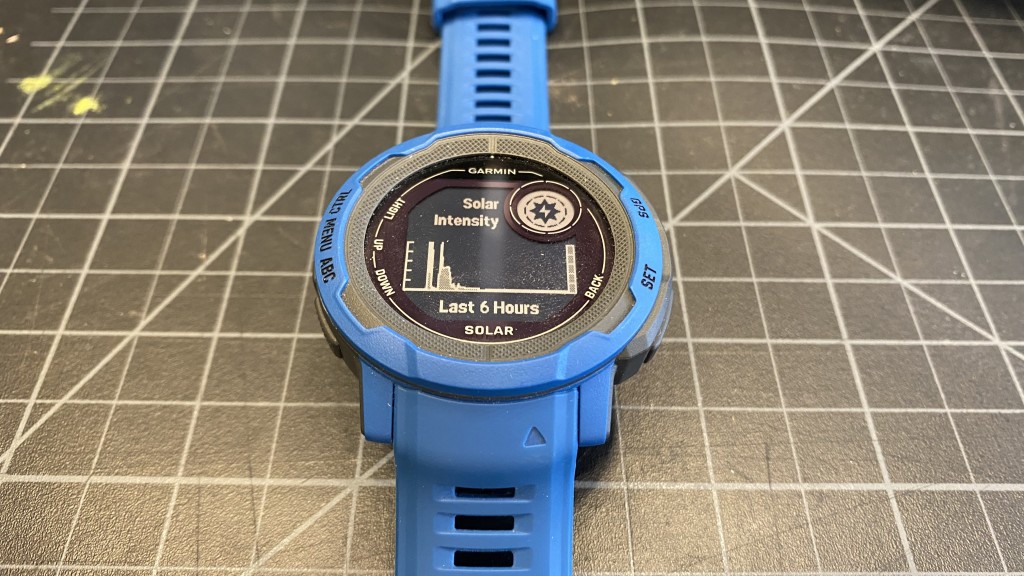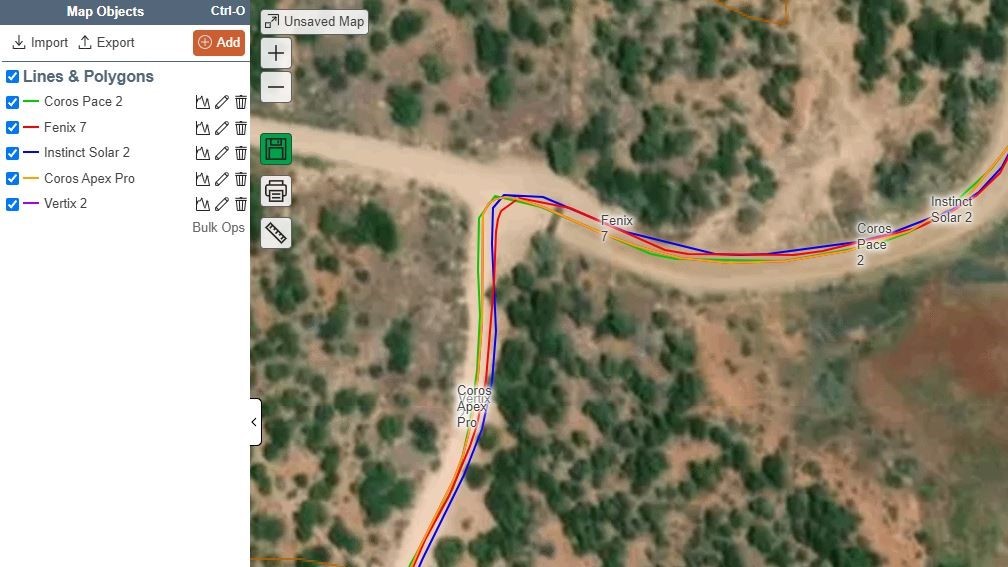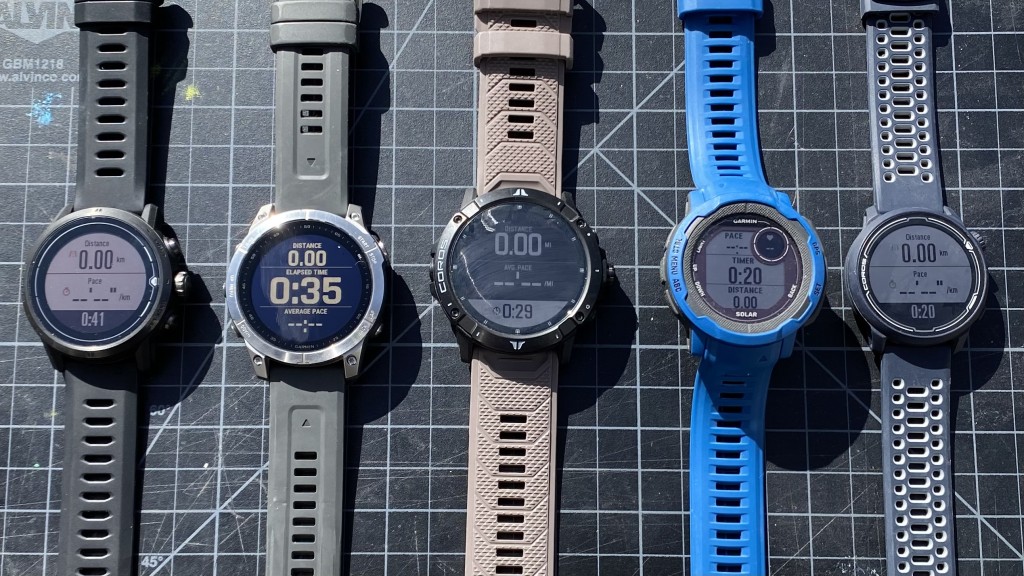We understand our readers perform a variety of activities, so we needed to test these products over a wide range of activities, weather conditions, and duration. We've logged thousands of miles during our testing of GPS watches, by foot, bike, and while swimming. Our goal is to provide you with real-world comparative results and help provide our opinion based on years of experience.
Our team of diverse testers captured different perspectives on what makes an outstanding GPS watch. Our lead tester logged fifteen to twenty training hours a week and monitored virtually every one of his training and active hours with one or more of the products in this review. While his usage may differ from yours, he hopes to make your decision-making process easier through his testing.
Features
The internal features of GPS watches are the main selling point, along with battery life. We analyzed the feature sets of various watches and compared them based on performance. By using the various brands and models, we developed a sense of what was most important to us. We took a total big picture look at the GPS watch features and didn't just reward the highest featured watch with the best score. Generally speaking, watches with more features scored higher on our list, but point differences were also made to include the features' usefulness and functionality.
All of our tested watches perform the basic functions needed to be classified as GPS watches, and today's watches all excel at these basic functions. More advanced features on higher-end models need to be a valuable addition to the user experience. As we said, more features resulted in a higher score, but we were mindful of marketing tactics and really focused on the features that were useful on a daily basis. Some features, while incredibly minor, can make a large difference to the user experience; we point these out to make you confident that your chosen feature set is right for you.
Battery Life
Battery life is most important to endurance athletes, but it can also be frustrating to recharge your watch every day, even as a recreational athlete. Several variables make it challenging to test the battery life of these GPS watches fairly because it hinges on how you use your watch. There are two important battery usage types — normal use and activity usage. We tested normal use (some manufacturers call this "smartwatch usage") by running just a few hours a week and using the device as a daily smartwatch — which included fielding random numbers of text notifications per day.
We also tested battery usage to determine how many hours each watch can last during a continuous activity, like a race. To do this, we let each watch run tracking data from a full charge until it was empty to see which one would make your 100-mile ultra without needing a charge and which wouldn't. An ultra runner, cyclist, or triathlete might need the battery to last during their activity for 10+ hours. We also explored various battery modes and battery-saving features. These are useful in providing the user control on extending the life of their models in both smartwatch or GPS recording modes. Having easy access to these modes increased the battery life score. While pure numbers produced a high score, having easy-to-use battery functions also helped a product gain points by allowing the user to understand and feel confident in changing settings and modes easily.
Ease of Use
This category is absolutely essential to any GPS watch purchase. It measures the watches' capacity to meet its intended purpose intuitively and straightforwardly. Sometimes one flaw can ruin the interaction and prevent the user from successfully acquiring necessary data. Testing for this category also included how the watches interact with their software platforms, whether an app, a website, or a program (or all three). If the syncing, data sharing, and data presentation on the platform is difficult to operate, view, or understand, then even if the watch is amazing, the user experience can be frustrating or ruined.
We tested these watches under normal daily loads while at work, but we also put them through rigorous exercises where time counts. If the watch performed well as a smartwatch during the day but was difficult to use when putting out a high level of effort, we noted this. Today's GPS models are a fine balance between an activity recording device and a smartwatch that pairs with your phone. Integrating endless smartwatch features that are difficult to use ruins the running experience out on the trail and vice versa. We tested through many different scenarios to find the best model with the least frustration so you can focus on what matters most throughout your day.
Accuracy
If a watch is inaccurate, the data is skewed, and the product is not completing its designed task. That said, no watch can be perfect; there are just too many variables to consider. To evaluate this metric, we had to repeat a lot of our test runs repeatedly. We ran for weeks, repeating routes and running new routes while wearing one watch on each wrist. In this way, we were able to compare the GPS accuracy. We could also test the optical heart rate monitor on two watches at a time, wearing one on each wrist.
We hiked in deep canyons to test each watch's ability to gather satellite data in areas with poor visibility and line of sight. Then we compared the various data to the official distances provided by the USGS. We also looked at the various satellite systems that the watches could pick up and noted the difference between Multi-GNSS and Dual-Frequency modes.
We found that a snug fit is imperative for receiving an accurate heart rate reading. The watches that didn't fit our wrists as snugly usually reported skewed heart rate results. We also used a chest strap heart rate monitor while using one or more of the watches as a stable comparison control. Chest heart rate monitors are considered more accurate and are not so easily affected by fit. Finally, we used the watches to monitor our sleep so we could review our resting heart rates. Since we were lying still and not sweating, sleep testing offered a more controlled environment for heart rate measurement testing.
Design
Design is mainly a function of size, fit, comfort, raw materials, and subjective appearance. Larger watches will not fit all wrists. Smaller ones may fit all wrists, but they make it difficult to read the screen. We measured and weighed each one and noted whether they are difficult to wear under typical running and athletic clothing and if size affected the fit, and thus, the accuracy of the optical heart rate monitor. We noted information about the type of strap used, its ability to quick release, and any other notable issues with buttons accidentally getting pressed while exercising. We also looked at the internal designs of the screen resolution, font sizes, and issues with buttons being bumped accidentally due to their prominence or lack thereof.






